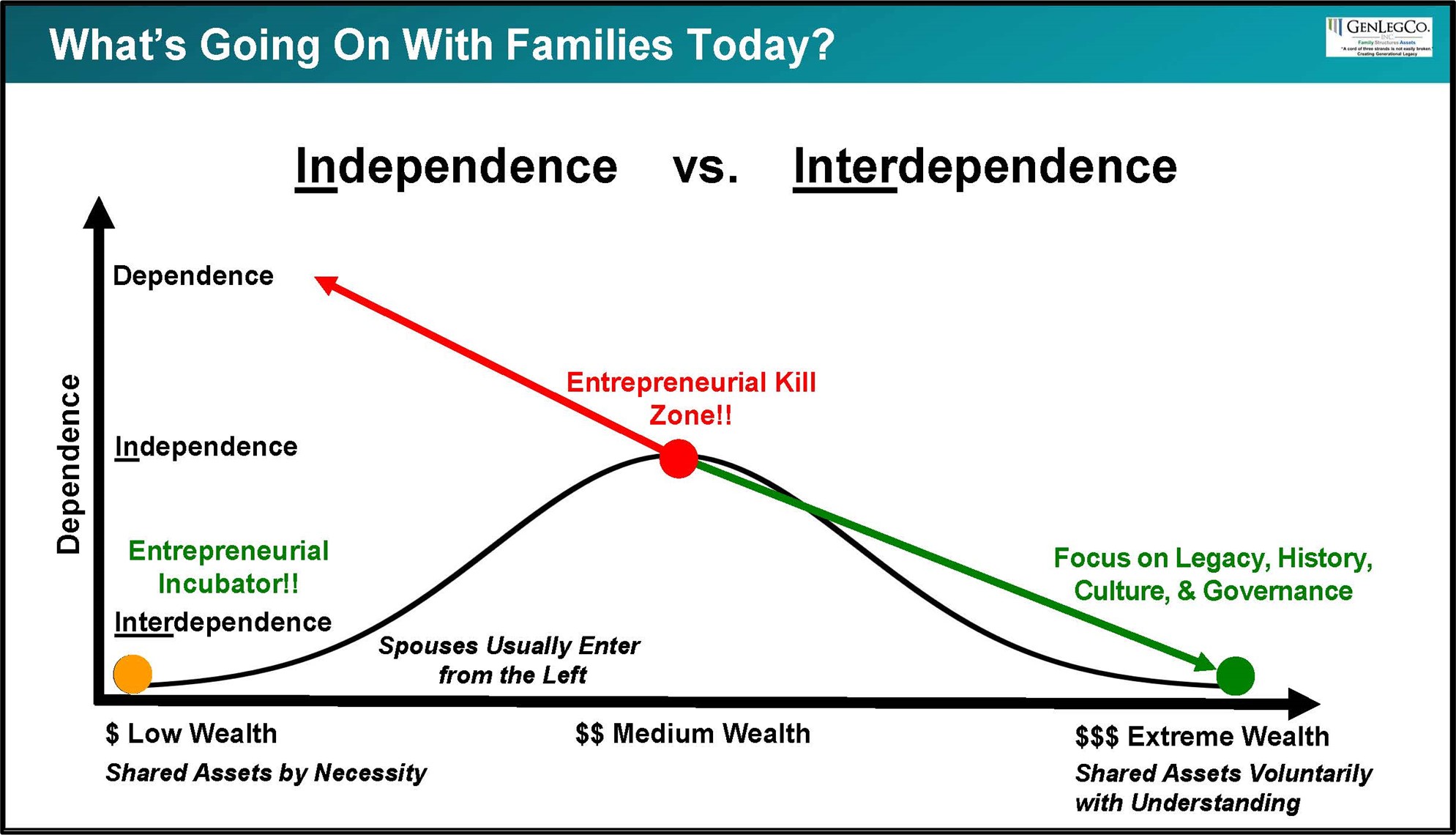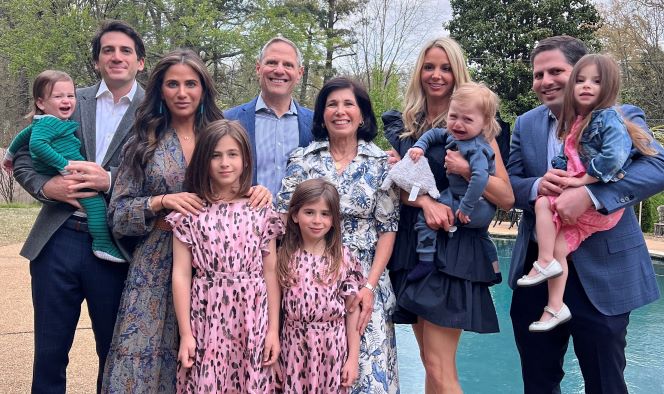Last week’s email told the story of how my support group (especially my brother Irwin) came to my rescue when the 2000 tornado destroyed The Blum Firm law office. I introduced the concept of INTERDEPENDENCE. Families who are interdependent are there for each other, helping everyone thrive as we go through life’s ups and downs together.
As families become more affluent, there is a tendency toward each person becoming more independent. Dr. James Grubman describes this process in Strangers in Paradise. Grubman refers to new wealth generators as “immigrants to the land of wealth.” As families leave the land of the working class and immigrate up the wealth ladder, they travel away from interdependence, more and more to a land where each person is independent. Our American culture encourages that process. We strive to bring up our children to be independent and self-reliant. We are a country created out of a Declaration of Independence. Yet independence can go too far, even to the point of causing family estrangement. As family governance consultant Tom Rogerson puts it: “Independence is great, except when it fully cannibalizes interdependence.” Yes, we declare our independence, but this country was founded on a Constitution that begins: “We the people,” not “I, the person…”
Lower net worth families have tremendous interdependence. Why? It’s out of necessity. I can relate. Irwin and I grew up in a small house sharing a bedroom, sharing a bathroom, and we all pitched in to work in Blum’s Café. Dinner table conversations were about the family business and making ends meet on a tight budget. On the rare occasions when we bought a new car, my dad took us along to watch him negotiate. Irwin and I went door-to-door collecting coat hangers to sell at the cleaners, two for a penny. (Actually, Irwin sent me out to collect the hangers while he stayed back to “run the business,” but I felt honored as the kid brother to be included in his business venture.) That upbringing provided us a natural family glue. It’s no wonder we were always there for each other, tornado and all. I believe Irwin knows he could count on me too (and not just when “helping” him write all his papers for school). As I’ve shared before, the ultimate example was on Irwin’s deathbed from pancreatic cancer, when he held onto life just long enough to provide blood for a genetics kit, so that I (his only at-risk blood relative) could gather critical genetic information for my own health care. Irwin held onto life, knowing I needed that blood study, and then he died moments after giving blood.
Tom Rogerson uses a graph to illustrate the risks to family cohesion when they move away from interdependence.

The horizontal axis moves from low wealth to extreme wealth. The vertical axis starts with interdependence, then moves up to independence, and further up to an unfortunate state of dependence. The graph shows that as wealth increases, family members become more and more independent. Dinner conversations are more social (“How’s your golf game, Dad?”) and less consequential. Kids have their own bedrooms and go to summer camp, no longer learning how to work with and negotiate with siblings. They lose training on how to make decisions together. They become less and less connected.
The lower left corner fosters entrepreneurialism. That’s the environment that created the juice for most of today’s wealth creators to thrive. Moving toward independence, with each person in his own silo, is detrimental to entrepreneurialism and especially detrimental when kids enter a family business. They love each other, but they don’t KNOW each other deeply. At its worst, it can lead to lives of isolation and substance abuse, hence the arrow leading back up towards dependence.
The graph shows that there is a movement for families of extreme wealth to reconnect, to intentionally work on rebuilding relationships with each other. The goal is to reestablish communication and build trust. The best way to do this is to embark on regular family meetings with team-building exercises and group learning. A third-party consultant should facilitate the meetings. Parents should join as participants and not run the meeting. The estate plan needs to adapt as well, using trusts to encourage family togetherness, enrichment, and mentorship of heirs. The goal is to build self-esteem and empower heirs, rather than create entitled “trust babies” waiting on their monthly distribution, deprived of incentive to get out of bed. Ultimately, the family creates a “familiness” culture where they are woven together in a family fabric, as Irwin and I were there for each other during the tornados of our lives.
I am grateful to Tom Rogerson, Jim Grubman, and other mentors who have awakened me to this new age of estate planning. I am an eager proponent of “qualitative” estate planning to go along with the “quantitative,” or estate planning that is both “heart” and “head.” I want to thank all of you who are encouraging me to share my passion to help families build a legacy and thrive from generation to generation. As commercial real estate broker Bill Zei of Dallas graciously wrote me: “Your writings help me stay mindful of how deeply important it is to stay united with family.” I’m honored to be a champion for that cause. At your urging, I will continue to share the lessons from the “soft” side of estate planning in my evolving journey as a holistic trusts and estates lawyer. The Blum Firm welcomes the opportunity to help you incorporate legacy planning into your estate plan.
Marvin E. Blum

Striving for an INTER-dependent Blum family, where we are all there for each other, including for the two little boys having a hard time. Marvin and Laurie Blum flanked by daughter Lizzy’s family (left) and son Adam’s family (right).
